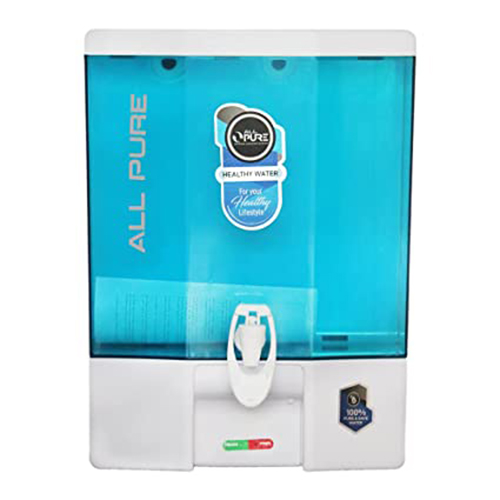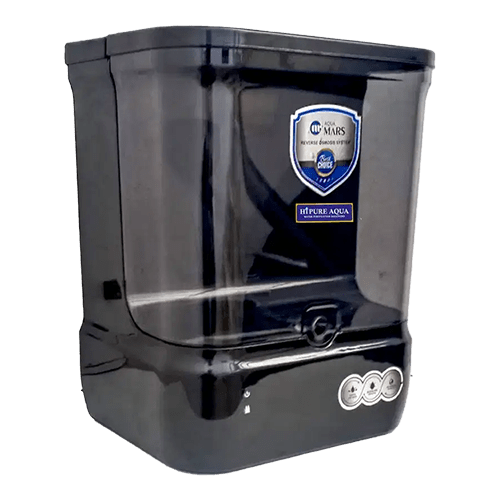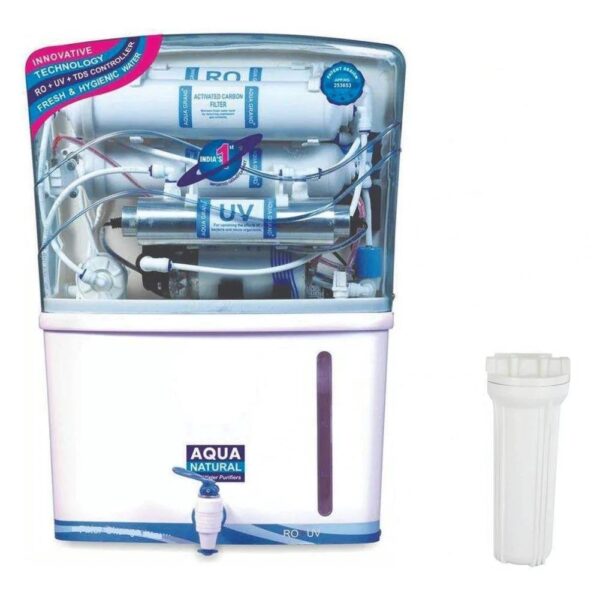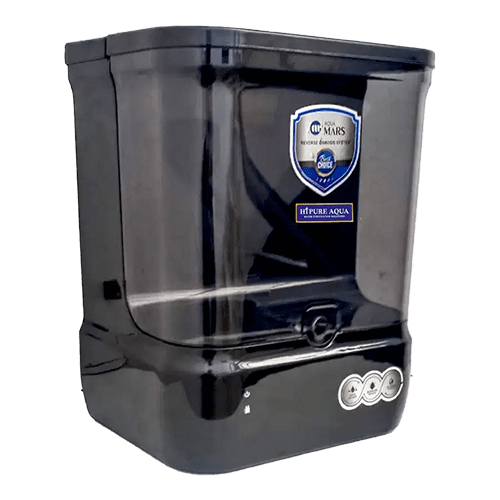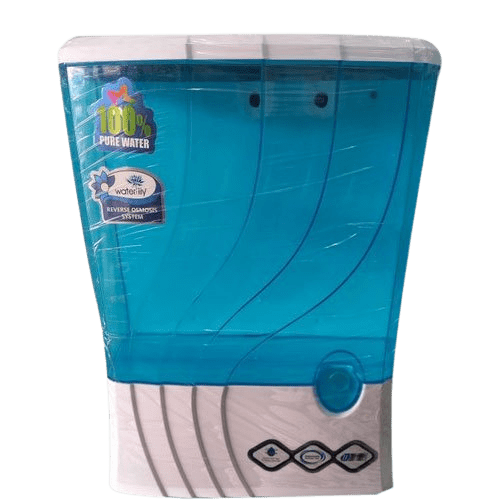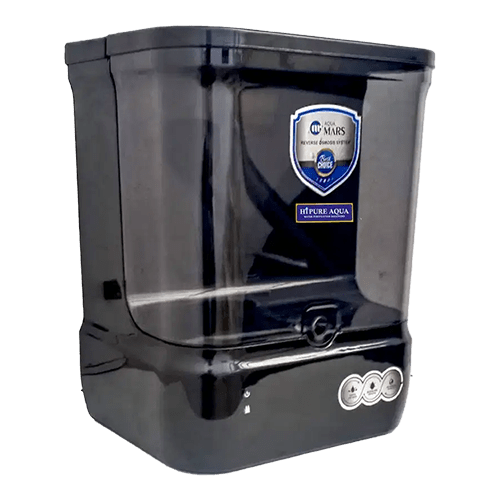Showing all 3 results
RO UF Water Purifier in Tuticorin
RO technology removes larger particles, dissolved solids, and heavy metals from the inlet water. In contrast, UF technology removes finer and less viscous impurities as well as bacteria and viruses that cause disease.
The RO UF water purifier in Tuticorin process uses hydrostatic pressure to force water through a semi-permeable membrane, similar to reverse osmosis. Ultrafiltration membranes typically have pores between 103 and 106 Daltons. It produces water with very high purity and low silt density by filtering out suspended solids, bacteria, viruses, endotoxins, and other pathogens.
UF is a form of membrane filtration in which a liquid is forced against a semipermeable membrane by hydrostatic pressure. Water and low molecular weight solutes pass through the membrane, while suspended solids and high molecular weight solutes are retained. Except for the size of molecules it retains, ultrafiltration is not fundamentally different from reverse osmosis, microfiltration, or nanofiltration.
A membrane is a thin layer of material that can separate substances when an electric current is applied across it. In addition to desalination, membrane processes can now remove bacteria, particulate matter, and natural organic matter. These substances can impart color, odor, and taste to water and react with disinfectants to emit disinfection byproducts.
Capital and operating costs continue to decrease as membrane production and module design advance. In this fact sheet, we discuss microfiltration (MF), ultrafiltration (UF), nanofiltration (NF), and reverse osmosis (RO).
UV technology uses electricity, whereas UF technology does not. Through a hollow membrane, it removes suspended solids, larger particles, and molecules from water. RO UF water purifier in Tuticorin can kill and eliminate bacteria and microorganisms, but they cannot remove dissolved solids. Unlike RO water purifiers, it cannot convert hard water to soft water. When you are uncertain of the water’s TDS levels, it is wise to use an RO UV water purifier coupled with an RO UF water purfier in Tuticorin.
RO UF water purifier in Tuticorin for drinking water?
Traditionally, ultrafiltration was used in hospitals and large city water plants. Ultrafiltration is now available as an under-sink water filter. With UF drinking water systems, you can provide your family with great-tasting water anytime, anywhere. Your drinking water will be protected from harmful chemicals by using a BPA-free Neo-Vas stainless steel water bottle.
Our Neo-Pure TL3 ultrafiltration system features a more efficient carbon filter and twist-lock cartridges for easy replacement. You don’t have to shut off the water before changing the filters because the system has a built-in shutoff valve.
You can easily install a UF system with 1/4″ quick-connect fittings, a feed supply adapter to hook up your cold-water supply, and a chrome designer faucet to complete the installation.
RO UF water purifier in Tuticorin benefits
- The system operates at a low pressure
- Viruses and bacteria are removed
- Ensures that water contains essential minerals
- Quickly and easily installs
- Produces no waste water
- The RO UF water purifier in Tuticorin system is eco-friendly. Water can be treated for reuse through ultrafiltration, which has a 90-95% recovery rate. The use of a home ultrafiltration water system reduces the number of plastic water bottles discarded in landfills.
Is UF required in the RO UF water purifier in Tuticorin?
The reverse osmosis membrane has the smallest pore size, so it provides the most extensive filtration, but this level of filtration isn’t always necessary. Minerals that are removed by an RO system are retained by a UF system
How does RO UF water purifier in Tuticorin work?
One membrane filtration method is ultrafiltration, which serves as a barrier between clean water and harmful bacteria, viruses, and other contaminants. Ultrafiltration systems force water through a membrane with a pore size of .02 microns. Particles too large to pass through the membrane stick to their outer surface. Fresh water and dissolved minerals are the only things that pass through.
When is RO UF water purifier in Tuticorin used?
As a result of the differences in pore size and type of particles removed, each type of filtration serves a different purpose. To remove microscopic contaminants while keeping minerals in their water, ultrafiltration is the filtration method of choice.
UF systems waste less water in the drain than RO UF water purifier in Tuticorin systems. In California, where water use is regulated, someone may choose UF. In South Carolina, where the water has few dissolved minerals, to begin with, UF may be chosen instead of RO. In some cases, ultrafiltration is used to reuse effluent water after filtration. In reverse osmosis, all particles, including dissolved substances, are removed from the water.
If you’re on a well water supply, you may prefer RO water from your refrigerator or tap. Also, RO water is ideal for saltwater aquariums, where the exact amount of salt can be added back to the clear water. In dairy and for some softening purposes, nanofiltration is frequently used to remove heavy solids. Algae and sediment are removed by microfiltration.
What can ultrafiltration remove?
UF membranes reduce particles 5,000 times smaller than human hair. These contaminants are reduced by 90-100% through ultrafiltration. Although UF can’t remove some organics, a .05 micron carbon block prefilter can minimize chlorine taste and odor, lead, cysts, volatile organic compounds (VOCs), and metallic trace elements (MTEs). It takes about two years for a UF membrane to wear out.

